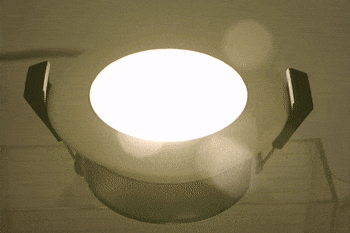An Engineer's Guide to Proper House Lighting
- Julie Moss
- Feb 15, 2024
- 3 min read
Updated: Feb 16, 2024

House lighting isn't just about illuminating a space; it's about creating an environment that enhances functionality, safety, and ambiance. Whether it's for a school auditorium, a theater, or an all-purpose room, proper house lighting can significantly impact the experience of occupants.
In this guide, we'll dive into the essential requirements and considerations for achieving optimal house lighting, ensuring versatility, efficiency, and compliance with relevant codes and standards.
Illumination Requirements
For a school auditorium or multi-purpose space, proper illumination is crucial. A minimum of 50 candles per square foot is recommended for classroom purposes, ensuring adequate visibility for educational activities. Additionally, uniform lighting distribution throughout the space is essential to avoid dark or bright spots, providing consistent illumination for various activities and events.
Notice the contrast above? The left image displays spotty, unevenly distributed lighting, while the right showcases uniform illumination.
Dimming Capability
To accommodate theatrical performances and events, house lights should be dimmable, with a minimum dimming capability of 1%. This flexibility allows for seamless transitions between different lighting scenes and atmospheres. It's important to ensure that the dimming controls are easily accessible and integrated with door control stations, stage lighting consoles, and optional touch screen controls for added convenience and versatility.
The images above show the difference between 10% dimming vs 1% dimming. As you see, the left is abrupt, while the right gradually lowers its luminosity.
Light Color Temperature

The choice of light color temperature can significantly impact the ambiance and functionality of the space. For theatrical performances, a color temperature of 3,000K is recommended to create a warm and inviting atmosphere. However, for multi-purpose rooms or auditoriums, a slightly higher color temperature of 3,500K to 4,000K may be more suitable for improved visibility and versatility. Studies show that within an educational environments, lighting plays a significant role in the brain's ability to function optimally. It's recommended to use color temperatures in the 4000-5000k range to keep students focused.
Glare Mitigation and Safety

To enhance comfort and safety, house lighting fixtures should be directed strictly downward to minimize glare into attendees' eyes. In cases of sloped ceilings, specialized fixtures with sloped ceiling adapters should be utilized. Additionally, the installation of aisle lighting is required for safety and code compliance, with ceiling-mounted and dimmable options preferred to minimize damage and ensure longevity.
Emergency Lighting
Emergency lighting is crucial for safe egress. For a power outage, house lighting will provide a minimum light level of 1 candle per square foot for at least 90 minutes, necessitating connections to emergency generators or inverters for uninterrupted operation. In case of a fire, the house lighting, connected to the fire alarm system, will turn on at 100%. Smoke, flames, and panic can obscure visibility, making it challenging for occupants to navigate their way to safety. The activation of the house lighting system at full brightness plays a crucial role in mitigating these hazards by illuminating exit routes and providing clear pathways for evacuation.
Integration of Advanced Technology
Advancements in LED and DMX technology offer limitless possibilities for house lighting design. Individually controllable light fixtures allow for dynamic color changes and intensity adjustments, seamlessly integrating house lighting into the overall show experience. Additionally, the option to incorporate video walls for ceiling or wall displays adds a modern and immersive element to the space.
Where to Start
To begin a successful house lighting project, partnering with a reputable lighting designer or turnkey company is essential. Evaluate their portfolio to ensure they have experience in designing, installing, and servicing house lighting systems. Discuss options, budgeting, and expectations thoroughly, and request lighting distribution drawings before proceeding with the installation to ensure alignment with your vision and requirements.












HI, I bought 3 scone lights, used and they do not have a mounting plate.
they say 2015 so I'm wondering if you still have them. they have a square base. The serial number is HW310OSC2G60
if you don't have the parts anymore could you recommend a place where I can get them? Thank you so much!
I was wondering if you could help me with finding some parts